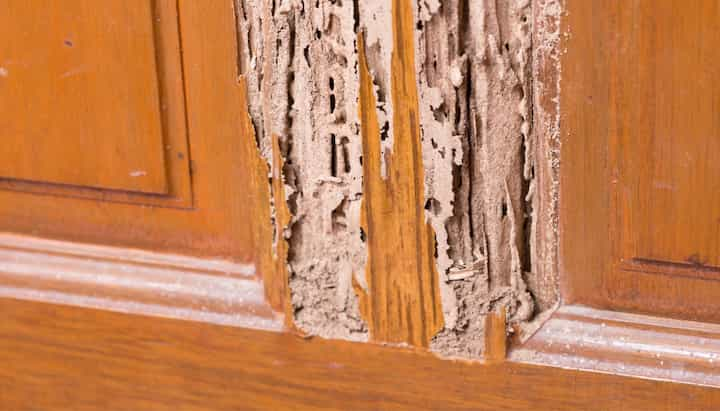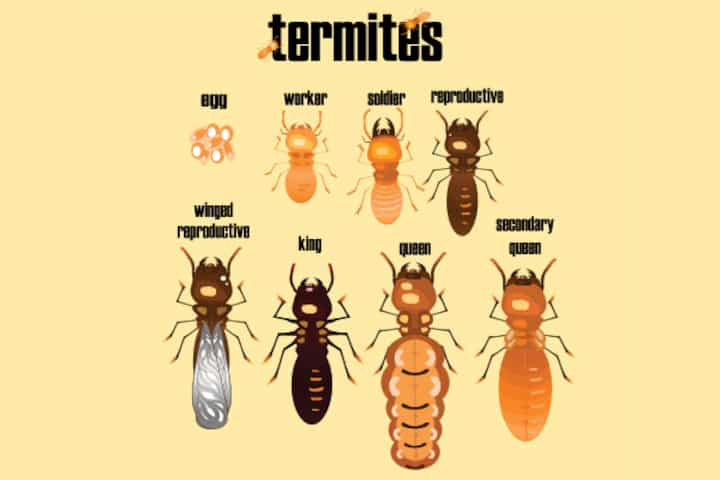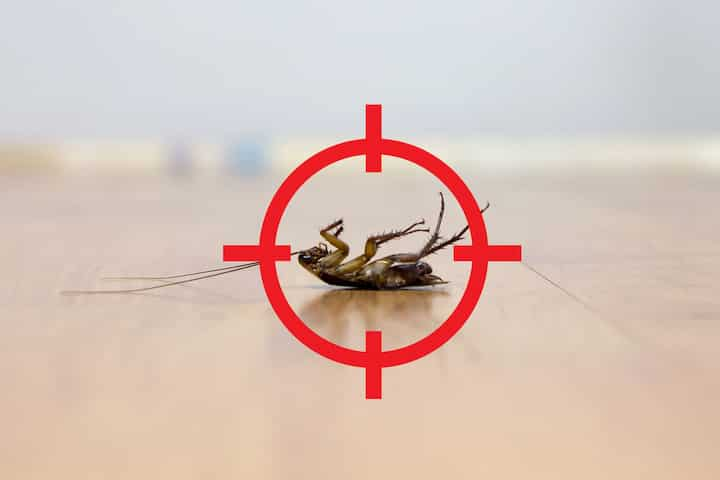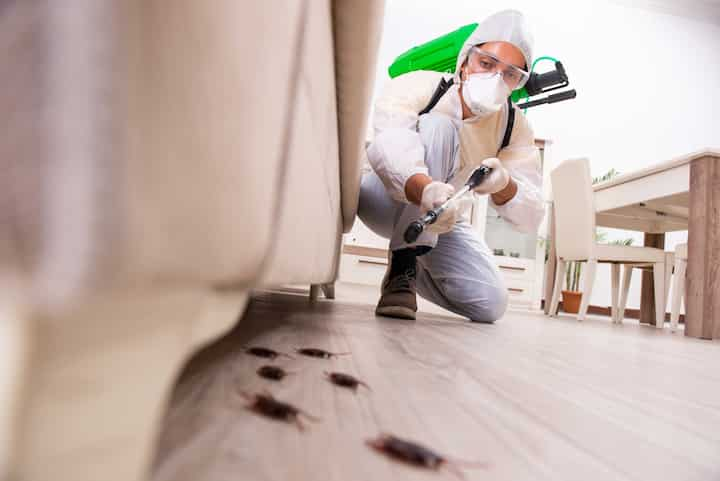About The Masons Termite Removal Experts
Providing termite inspection Woodbridge, Virginia locals depend on!
One of the worst issues any household can experience is termite infestation. These silent destroyers slowly and gradually chew through your wallpapers, flooring, and wood. Fortunately, our professionals can help eliminate the problem regardless of the damage extent and severity. The Masons Termite Removal Experts has a history of successful Woodbridge termite control cases. Because termite infestation is pretty common in the US, thousands of customers have reached out to us till now for help. We have dealt with mild to moderate and severe cases and haven’t failed to please our customers. Our professionals inspect the termite damage severity and use a suitable solution to control pests. We blend Integrated Pest Management (IPM) with our unique termite control techniques to remove termites. Our goal doesn’t focus solely on termite elimination. Instead, we aim to identify the root cause of the problem. For instance, your home structure may have cracks or locked moisture that could be encouraging termite growth. Having treated a plethora of cases in the past, our termite inspection professionals seek to eliminate the problem source. This prevents termite growth in the future. We also detect the termite type and take preventive measures accordingly. The diet, affect, habitat, and prevention techniques of different termite types vary significantly. As such, a single treatment method doesn’t work for all. Our skilled team at The Masons Termite Removal Experts of Woodbridge determines the termite infestation type and takes preventive measures accordingly.
Termite problems in Woodbridge
Every homeowner styles their property to fit their unique tastes. From quality flooring to trendy wallpapers and cozy bedding to silky drapes, we take steps to make our home a haven. Beyond that, we take measures to keep our home tidy and hygienic. While these steps help us create a peaceful home environment, a few unexpected events cause unwanted troubles for us. One such problem that tops the list of annoying issues that Woodbridge homeowners face is termites. It wouldn’t be wrong to consider it a terrible nightmare for families. You might have spent thousands of dollars installing top-notch wooden doors, windows, and furniture. But unfortunately, the notorious termites take only a few hours to cause structural damage. Even worse, once your home gets exposed to termites, they continue to form colonies, and the structural damage caused by them is often irreparable. Nonetheless, recognizing termite infestation at the right time helps you save your money. As soon as you spot termites in your home, you must get in touch with a professional termite exterminator in Woodbridge, Virginia to mitigate the problem. We are one of the reputable termite inspection providers in Woodbridge. Our experts access the termite damage extent and design an appropriate action plan to prevent the problem. We aim to treat the current termite problem and offer genuine solutions to keep your home from pest infestation in the future.
5 things you must know about termites
Termites are active in warmer climates
Termites are more active in rising temperatures than in colder climates. This is because they work during the hotter months of the year to store food for winters. This indicates they are a year-round threat to areas that experience warmer climates throughout the year. For instance, you are at risk if you live in the southern states. However, note that the National Pest Management Association tells us that this pest exists in every region of the US. Therefore, your home isn’t ruled out entirely. Regardless of how well-maintained your property is, you must be vigilant about infestation. One of the best ways to identify the problem is to inspect your home time and again. Because they have an ability to remain hidden, they aren’t easy to spot until you stumble across visible damage. However, knowing their bodily structures and learning more about their habits can help you identify them early on.
Termites leave warning signs
While termites are notorious for being destroyers, they are also ill-famed for being sneaky. You could be facing a problem for days, but you wouldn’t even know it. Nonetheless, regardless of how stealthy they tend to be, they leave a few warning signs. Any savvy homeowner can spot them; slight diligence is required, however. Here are a few symptoms of termite infestation.
- The wooden structures would produce hollow sounds on tapping them.
- Your paint and walls would appear bubbly and cracked.
- You’ll come across a swarm of winged insects around your house, typically outdoors – near the light.
- Lastly, you’ll observe mud tubes on crawl spaces, walls, and wooden structures.
Simple termite prevention steps can help
In the event of termite infestation, there’s nothing better than getting in touch with a professional termite exterminator in Woodbridge, Virginia. They know how to handle the job and will take a few hours to eliminate the problem. However, you can take a few steps to protect your home (more on the topic below). Simple precautionary measures include.
- Keeping downspouts and gutters free of clutter, dirt, and debris, the healthier the environment, the lower the chances of pest infestation.
- Keeping lumber and firewood away from your property
- Installing exterior vents and screens
- Eliminating moisture by fixing leaks
Termites are not deadly, but dangerous
Many individuals question if termites are deadly. While soldier termites have the capability to bite humans, they’ll do so only if handled carelessly. Therefore, termite removal is best left to professionals. Essentially, these pests bite wood and other cellulose materials. They also may attack other insects but rarely have any human attacks reported yet. Even if they bite, their sting isn’t life-threatening. Simply put, they are dangerous but not deadly. Harmful in a way that they damage your home materials, and delaying their removal might destroy your belongings beyond repair.
Termites have sense organs and use vibration to communicate
Termites consist of sense organs at the base of their tibiae and antenna. These help them feel vibrations, allowing them to select food sources they want to infest. For instance, the sense organs help them feel the vibroacoustic signals of wood pieces. Additionally, they use vibrations to exchange messages. As soon as the soldier termites sense a threat, they bang or tap their heads against the surfaces. This action produces vibrations and alarms the entire colony. Consequently, the insects take action to prevent themselves from getting attacked.
How to prevent termite damage in your Woodbridge property?
Taking early steps to keep termites out of your home is way better than trying to eliminate them after infestation. The United States Environmental Protection Agency (EPA) shares tips to make your home less vulnerable to termites. During construction:
- Leave ventilation space between wood and soil and consider using a concrete foundation.
- Enclose open wood surfaces using a metal barrier or sealant.
After construction:
- Keep the soil surrounding your Woodbridge home dry through a proper drainage system. This includes maintaining downspouts and gutters.
- Keep plants and vents free from unwanted obstruction.
- Do not grow shrubs and trees too close to your home. Also, avoid exposing wood surfaces to plants.
- Eliminate openings that allow termites to access your home. This might require you to fill in the cracks.
Further, the National Pest Management Association also shares guidelines to prevent termite infestation during the spring season.
- Inspect your Woodbridge home for mud tubes, rotting wood, damaged structures, and visible termite existence.
- Nothing attracts termites more than water. So, make sure you remove moisture sources to limit the chances of their presence.
- Avoid stacking piles of firewood closer to your home. Also, if you’ve bought some and want to keep them closer to your property, do not forget to inspect them for termites. Otherwise, you might be introducing termites to your home yourself.
- Consider discarding old grade stakes and boards from your property as they might encourage termite growth.
- On spotting visible termite infestation signs, call a licensed professional organization immediately.


What are termites?

Termites, with over 2,750 species, are widely distributed worldwide. Most of their species exist in tropical rainforests, but they are also found in North America, British Columbia, Maine, and Eastern Canada. These tiny insects are typically less than half-inch in size. In fact, you may not even identify them as insects with a naked eye; they appear like dust particles. Data reveals that termites cause over $5 billion in property damage each year. They feed on cellulose paper and wood items during the spring season. Therefore, the Professional Pest Management Alliance (PPMA), a pest control organization, designates the second week of March as Termite Awareness Week. The awareness week focuses on educational campaigns and programs throughout social media channels to enlighten people about this silent home destroyer.

Termites: A Comprehensive Guide to Understanding and Eliminating Them
Introduction
Termites, commonly known as “white ants,” are wood-destroying pests that pose a significant threat to homes, businesses, and other wooden structures. Their ability to quietly infest and weaken structural components can lead to extensive and costly damage if left untreated. This guide will delve into the world of termites, exploring their biology, behavior, and effective methods for their control and elimination.
Understanding Termites
Biology of Termites
Termites belong to the order Blattodea, which also includes cockroaches. They are characterized by their social organization, living in colonies that can range in size from a few hundred to millions of individuals. Termite colonies consist of different castes, including workers, soldiers, reproductives (king and queen), and nymphs. Workers are the most abundant caste and are responsible for foraging for food, building and maintaining the nest, and caring for the young. Soldiers have enlarged heads and powerful mandibles for defending the colony from threats. Reproductives are responsible for producing new offspring and founding new colonies.
Habitat and Feeding Habits
Termites are primarily found in tropical and subtropical regions around the world. They nest in moist, dark environments, often in soil, wood, or other cellulose-based materials. Their diet consists almost exclusively of cellulose, a substance found in wood, paper, and other plant materials. Termites are voracious feeders and can consume large amounts of wood over time. They do not directly digest cellulose; instead, they rely on microorganisms in their digestive tracts to break down the cellulose into sugars that they can absorb.
Signs of Termite Infestation
Early detection of a termite infestation is crucial for minimizing damage. Here are some common signs to watch out for:
- Mud tubes: Termites use mud tubes to travel between their nests and food sources. These tubes, which resemble tiny tunnels, are often visible on foundations, walls, and other surfaces.
- Damaged wood: Termites weaken wood by consuming its inner layers, leaving behind a thin and brittle surface. Infested wood may appear hollow or spongy.
- Swarmers: During the mating season, winged termites (swarmers) emerge from the nest to find new mates and establish new colonies. Seeing swarmers inside or around your property can indicate an active infestation.
- Frass: Termites produce small, pellet-shaped droppings called frass. The presence of frass near woodpiles, baseboards, or other areas can be a sign of termite activity.
- Musty odor: Termite infestations can produce a musty or earthy odor that may be noticeable in infested areas.
Types of Termites
There are numerous species of termites, each with its own unique characteristics and habitat preferences. Some common types of termites include:
- Subterranean termites: These termites nest in the soil and build mud tubes to reach above-ground food sources. They are the most common type of termite in the United States.
- Drywood termites: Unlike subterranean termites, drywood termites nest directly in wood and do not require contact with the soil. They are less common than subterranean termites but can cause significant damage to wooden structures.
- Dampwood termites: Dampwood termites nest in damp or decayed wood. They are often found in fallen logs, stumps, and other areas with high moisture content.
- Formosan termites: Native to Asia, Formosan termites are an invasive species that has become a major pest in certain parts of the United States. They are known for their aggressive behavior and large colonies.
Termite Damage and Prevention
Termite infestations can cause extensive damage to wooden structures, including:
- Structural damage: Termites weaken wood by consuming its inner layers, compromising the structural integrity of buildings and other structures.
- Property devaluation: A termite infestation can significantly reduce the value of a property.
- Health hazards: Damaged wood can become unstable and pose a safety hazard.
- Costly repairs: Repairing termite damage can be costly and time-consuming.
- Insurance issues: Some insurance policies may not cover damage caused by termites.
To prevent termite infestations, consider the following measures:
- Eliminate moisture: Termites are attracted to moist environments. Fix leaky faucets, pipes, and downspouts to reduce moisture around your property.
- Remove wood debris: Woodpiles, fallen logs, and other wood debris provide nesting and food sources for termites. Keep your property free of these materials.
- Inspect regularly: Regularly inspect your home and surrounding areas for signs of termite activity. Pay attention to mud tubes, damaged wood, and swarmers.
- Consider a professional inspection: A professional termite inspector can thoroughly inspect your property for signs of infestation and recommend appropriate treatment options.
Termite Control and Elimination
If you suspect a termite infestation, it is crucial to seek professional help immediately. Termite infestations can worsen over time, leading to extensive damage and costly repairs. Several methods are commonly used for termite control and elimination:
- Termite baiting systems: Baiting systems involve placing bait stations around the perimeter of a property. Termites feed on the bait and carry it back to their nests, spreading the bait and eliminating the colony.
- Liquid treatments: Liquid treatments involve injecting or spraying a termiticide into the soil around a structure or directly into infested wood. The termiticide creates a chemical barrier that prevents termites from entering or infesting the treated area.
- Fumigation: Fumigation is a more drastic method that involves releasing a gas into a structure to kill termites and other pests. Fumigation requires the evacuation of the property for several days.
- Heat treatments: Heat treatments involve raising the temperature of a structure to a level that kills termites and their eggs. Heat treatments can be effective but require specialized equipment and professional expertise.
The choice of termite control method depends on various factors, including the type of termite, the extent of the infestation, and the specific structure. A qualified termite professional can assess the situation and recommend the most appropriate treatment option.
Conclusion
Termites are a persistent threat to wooden structures, but with proper knowledge and effective control measures, their damage can be prevented and eliminated. Understanding the biology, behavior, and signs of termite infestation empowers homeowners and property owners to take proactive steps to protect their investments. If termite activity is suspected, seeking professional help is crucial to minimize damage and restore the integrity of a structure. By working with qualified termite professionals, homeowners and property owners can effectively safeguard their properties and ensure long-term structural integrity.
Getting in touch with a professional termite company
While preventive measures beforehand offer an excellent way to avoid the vexing pest infestation issue. If you fail to protect your home, there’s nothing better than contacting a termite treatment company in Woodbridge, Virginia. Our Woodbridge termite removal professionals are skilled at termite elimination. They spot the visible and hiding termite on your property and carefully handle its removal. Slight negligence during termite elimination might damage the structures further. Our expert team, however, manages the entire process cautiously. This minimizes structural damage and lowers the risk of termite spread in your home. We also identify the source of termite infestation and share tips to protect your property from pests in the future. Contact us to speak with one of our contractors and get Woodbridge termite treatment today!
Contact Us Today